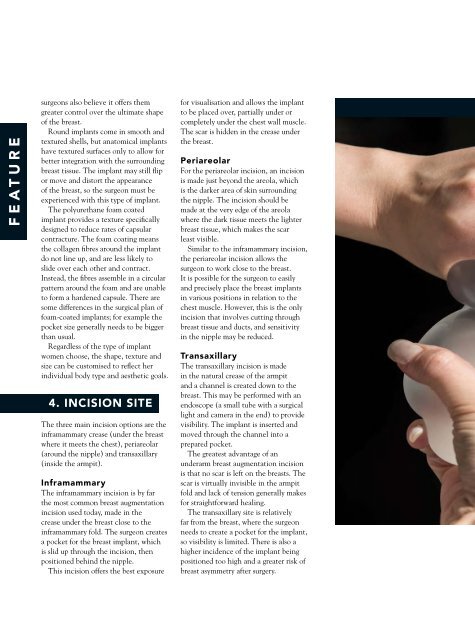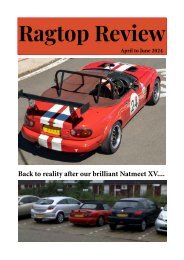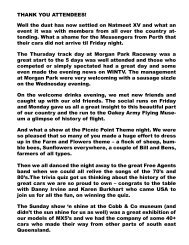CosBeauty Magazine #85
CosBeauty is the #BeautyAddict's guide to lifestyle, health and beauty in Australia. In this issue: - The Breast Report - your guide to augmentation - Put an end to bad hair days - 24 hour makeup, products that last - Sex appeal - do you have it?
CosBeauty is the #BeautyAddict's guide to lifestyle, health and beauty in Australia.
In this issue:
- The Breast Report - your guide to augmentation
- Put an end to bad hair days
- 24 hour makeup, products that last
- Sex appeal - do you have it?
Create successful ePaper yourself
Turn your PDF publications into a flip-book with our unique Google optimized e-Paper software.
feature<br />
surgeons also believe it offers them<br />
greater control over the ultimate shape<br />
of the breast.<br />
Round implants come in smooth and<br />
textured shells, but anatomical implants<br />
have textured surfaces only to allow for<br />
better integration with the surrounding<br />
breast tissue. The implant may still flip<br />
or move and distort the appearance<br />
of the breast, so the surgeon must be<br />
experienced with this type of implant.<br />
The polyurethane foam coated<br />
implant provides a texture specifically<br />
designed to reduce rates of capsular<br />
contracture. The foam coating means<br />
the collagen fibres around the implant<br />
do not line up, and are less likely to<br />
slide over each other and contract.<br />
Instead, the fibres assemble in a circular<br />
pattern around the foam and are unable<br />
to form a hardened capsule. There are<br />
some differences in the surgical plan of<br />
foam-coated implants; for example the<br />
pocket size generally needs to be bigger<br />
than usual.<br />
Regardless of the type of implant<br />
women choose, the shape, texture and<br />
size can be customised to reflect her<br />
individual body type and aesthetic goals.<br />
4. Incision site<br />
The three main incision options are the<br />
inframammary crease (under the breast<br />
where it meets the chest), periareolar<br />
(around the nipple) and transaxillary<br />
(inside the armpit).<br />
Inframammary<br />
The inframammary incision is by far<br />
the most common breast augmentation<br />
incision used today, made in the<br />
crease under the breast close to the<br />
inframammary fold. The surgeon creates<br />
a pocket for the breast implant, which<br />
is slid up through the incision, then<br />
positioned behind the nipple.<br />
This incision offers the best exposure<br />
for visualisation and allows the implant<br />
to be placed over, partially under or<br />
completely under the chest wall muscle.<br />
The scar is hidden in the crease under<br />
the breast.<br />
Periareolar<br />
For the periareolar incision, an incision<br />
is made just beyond the areola, which<br />
is the darker area of skin surrounding<br />
the nipple. The incision should be<br />
made at the very edge of the areola<br />
where the dark tissue meets the lighter<br />
breast tissue, which makes the scar<br />
least visible.<br />
Similar to the inframammary incision,<br />
the periareolar incision allows the<br />
surgeon to work close to the breast.<br />
It is possible for the surgeon to easily<br />
and precisely place the breast implants<br />
in various positions in relation to the<br />
chest muscle. However, this is the only<br />
incision that involves cutting through<br />
breast tissue and ducts, and sensitivity<br />
in the nipple may be reduced.<br />
Transaxillary<br />
The transaxillary incision is made<br />
in the natural crease of the armpit<br />
and a channel is created down to the<br />
breast. This may be performed with an<br />
endoscope (a small tube with a surgical<br />
light and camera in the end) to provide<br />
visibility. The implant is inserted and<br />
moved through the channel into a<br />
prepared pocket.<br />
The greatest advantage of an<br />
underarm breast augmentation incision<br />
is that no scar is left on the breasts. The<br />
scar is virtually invisible in the armpit<br />
fold and lack of tension generally makes<br />
for straightforward healing.<br />
The transaxillary site is relatively<br />
far from the breast, where the surgeon<br />
needs to create a pocket for the implant,<br />
so visibility is limited. There is also a<br />
higher incidence of the implant being<br />
positioned too high and a greater risk of<br />
breast asymmetry after surgery.


















